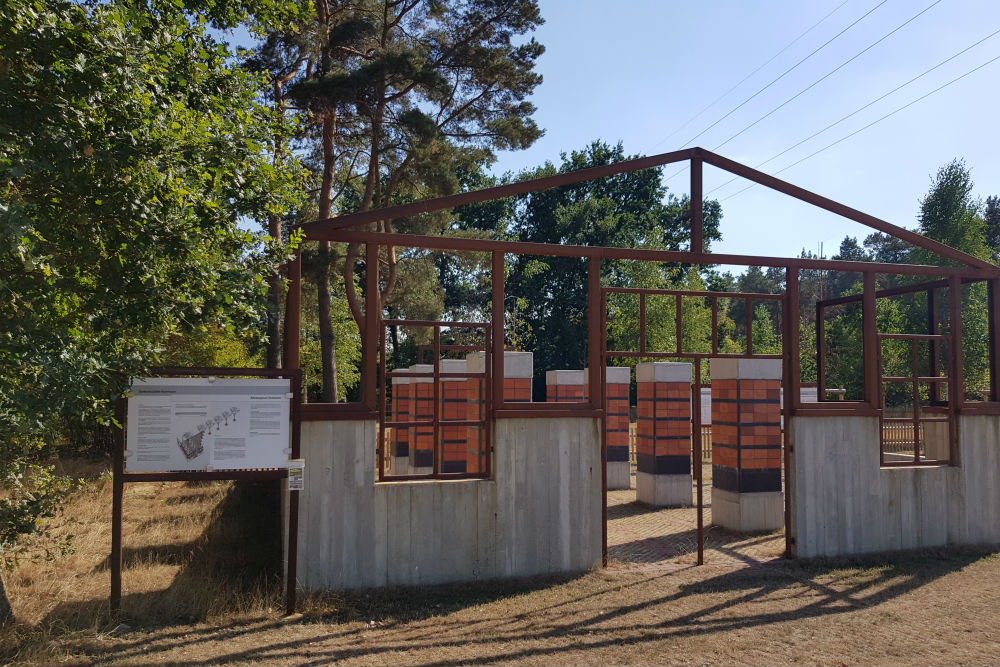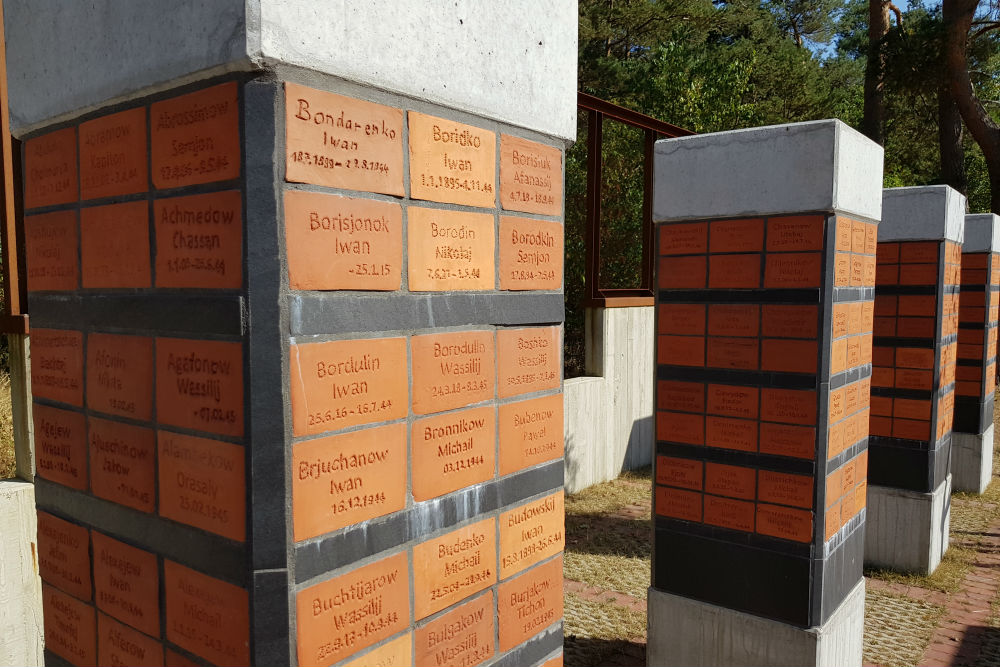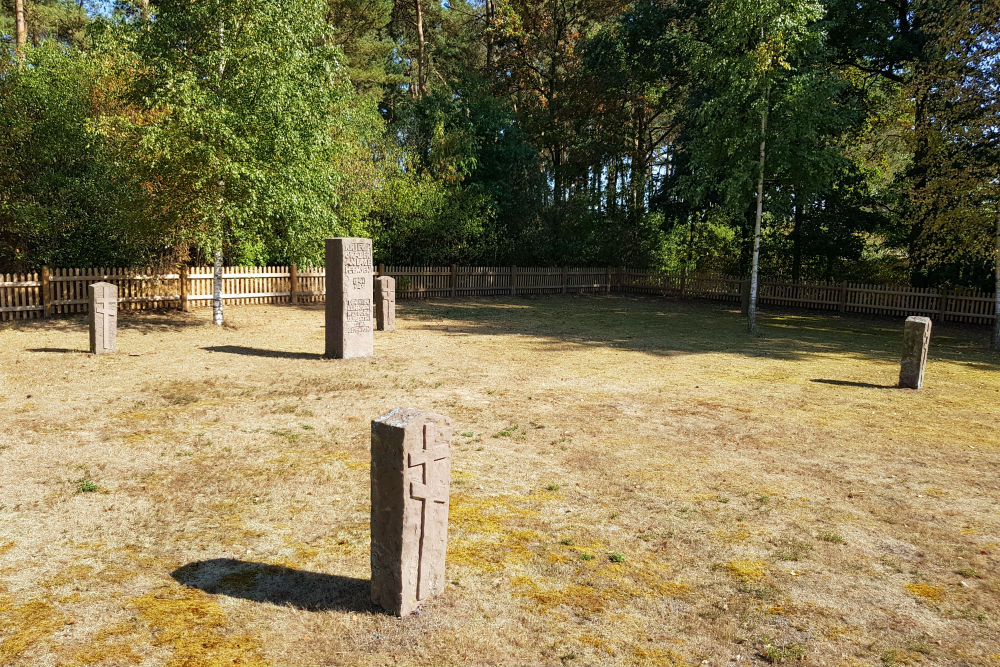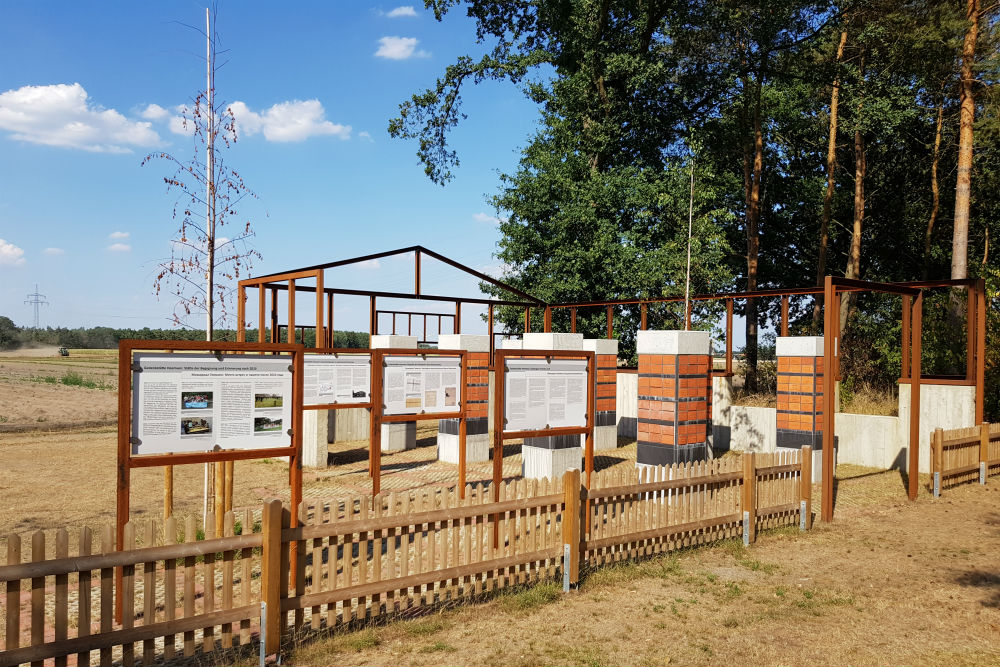Cemetery and Memorial Military Hospital Heemsen
The site is signposted from Schulstrasse at Ginsterweg and Mühlenweg and reached by a short unpaved road between these two streets on the edge of the field. A car park is adjacent to the memorial and cemetery.
In March 1944 a military hospital was established in Heemsen to house Soviet Prisoners of War suffering from tuberculosis. The patients were first sent from Stalag X B at Sandbostel and soon also from other camps in the region (such as Stalag X A at Schleswig) and by the dissolution of the camp in March 1945 1500 sick prisoners had been housed here.
The location was chosen for its proximity to the railway station of Rohrsen (giving the camp its common name of 'Rohrsen Camp', despite being in the village of Heemsen) and the fact that the site was largely rural and unoccupied (the site is now covered by housing around Fleiderweg 52.704260,9.252298).
Prisoners arrived by freight train and were then forced to march on foot about a mile to the camp, despite their illness and the sufferings of their rail journey. Many were already dead before they reached the camp.
The camp had originally been built to house French prisoners of war in 1940 before it's designation in 1944 as a military 'hospital' for Soviet prisoners. 26 wooden barracks were contained within a barbed wire enclosure 170 x 120 meters with few facilities for the prisoners treatment, care or sanitation. As a result 740 prisoners were to die here between March 1944 and March 1945.
The Heemsen memorial, completed in 2017, consists of a concrete and rusted steel symbolic reconstruction of one half of one of the wooden barracks. In the interior are 8 pillars that carry the names of each of the 740 victims with, where possible, the dates of their birth and their death. Each name was inscribed by local school pupils and residents as part of their 'Give the dead a name' project.
The monument leads to the burial ground where the 740 still rest. The burial site was a short distance away from the camp where the bodies of the dead were brought by hand cart. Prisoners, themselves suffering from TB, were forced to dig the graves, drop in the bodies, fill in the graves and then pull the cart back to the camp.
39 mass graves have been identified over an area of 33 x 33 meters. Each grave was 2 x 6 meters in width with up to 24 POWs buried in each grave.
The cemetery is enclosed by a wooden fence entered through the Heemsen memorial. A number of the graves are marked by rough stone stele inscribed with the 6 pointed cross of the Russian Orthodox church. A larger commemorative stone on the eastern side of the cemetery serves as the cross of remembrance and carries the inscription. 6 information panels with text in German and Russian tell the story of the camp, cemetery and the biography of one victim. A free information pamphlet is also available on site.
The superbly moving memorial has been funded, initiated and developed almost entirely by the efforts of the local community.
Do you have more information about this location? Inform us!
Source
- Text: Andy Pegler
- Photos: Andy Pegler







